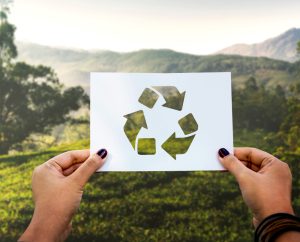Consumer packaging is one of the basic necessities of modern life. It plays a key role in what packaged items you choose to purchase, it provides critical legal consumer information (as well as other important information, such as nutritional facts, guidelines for use, instructions on operation and assembly, etc.), and it brings essential products safely into your home. Packaging, in fact, is everywhere. And if you think about it, this is somewhat new to the modern world. In times past, brands were not as ubiquitious as they are today, and so certain items such as dry goods (like oats, for example) were simply sold loose in the barrel at a general store. In addition, there were incalcuably fewer options for goods and products in years past. But now that there are five thousand brands of toothpaste, there are five thousand different packages to help sell each one.
And from a business perspective, packaging is indeed a great selling tool, as well as a necessary resource to accompany your product. Think about it: as a consumer, how often has an eye-catching design on a package influenced you to buy it?
Or think of how important drug manufacturer’s data on its packaging is relied upon. Many products would be unusable without this information. And how often are you grateful that a package has kept your food or fruit safe until it actually reaches your refrigerator? These days, we simply take it for granted.
Indeed, consumer packaging does a lot for our economy, and in many ways makes our lives work the way they do. But all this packaging comes at a cost. With all this stuff, and all this plastic, there comes a ton of waste. And in this series about environmentally-friendly packaging, the packaging experts at United Label are going to look at this topic in detail, such as the state of the industry to the response from retailers and governments, as well as drawbacks of “going green.”
Entering The New Circular Economy
As consumers increasingly depend on packaging, they are also eager to help the environment. Studies show that more than half of consumers take sustainable packaging into consideration when selecting a product with millennials and Gen Z’s leading the way. In addition, many consumers are willing to pay 10-20% more for products in sustainable packages and would like to see more recycled content, increased recyclability, as well as fiber-based substitutes.
Last year, the “Global Packaging Trends 2020” report put packaging companies on notice to remain “ahead of the recycling curve” and become innovators in the realm of recycling. They must start to think about packaging solutions for today and for the future.
Businesses and packaging producers are taking their cue from consumer demands and have been stepping up to make more sustainable packaging options. Many packaging printers are also being driven by government rules and regulations to lessen the impact of packaging waste in landfills and in the ocean.
To that end, many businesses are creating sustainable packaging plans to redesign their packaging portfolio, reduce the packaging that’s not needed, and reformat the packaging to ensure it is reusable, recyclable or compostable. This brave new world is being called the “circular economy,” a popular buzzword for reducing, reusing, repairing, sharing, and recycling.
The Impact of Packaging On The Environment
Why is packaging so important to the environment? Because, as a whole, the entirety of consumer packaging is a huge—and ever growing—market.
Packaging can be found manufactured on all types of substrates, including paperboard, plastic, and film. According to a market research report entitled “Paper & Paperboard Packaging Market,” published in early November 2021 by MarketsandMarkets, the market is estimated grow from $199.8 billion in 2021 and is projected to reach $254.5 billion by 2026. Remember, that is not for the goods themselves—just the packaging within which the goods are contained, transported, and sold.
The report also notes that a shift has occurred from plastic to more usage of paper and paperboard in the packaging industry, as environmental concerns take ever more precendence in the public consciousness. Most likely, in future years the rising demand for sustainable and recycled packaging for food, healthcare, and personal and homecare applications will further drive the paper and paperboard packaging market.
The Response From Industry and Government
In the next article in our series on packaging going green, we’re going to look at what retailers are doing about the growth of packaging and its impact on the environment, as well as legislative changes that are aimed at providing solutions.
In the mean time, feel free to reach out to United Label when you’re ready for your next digital printing project.
